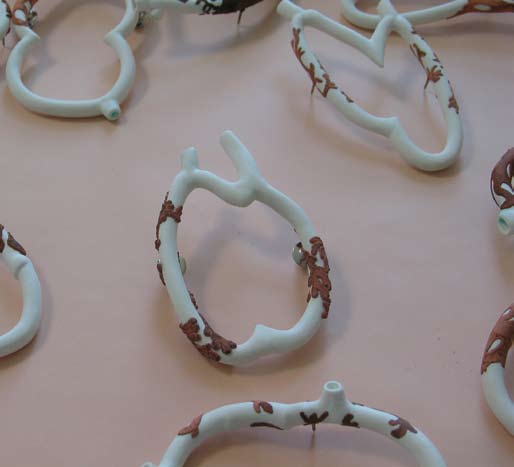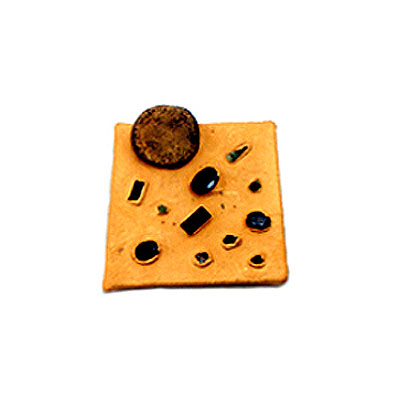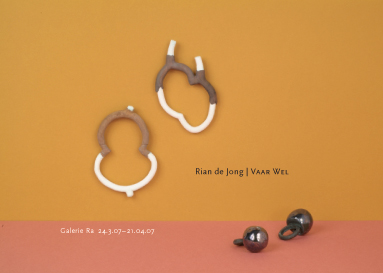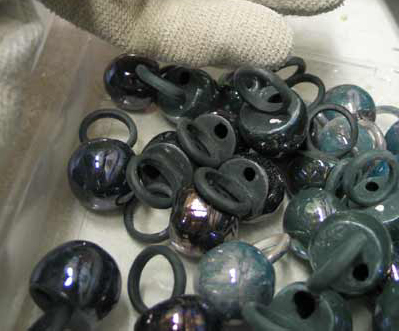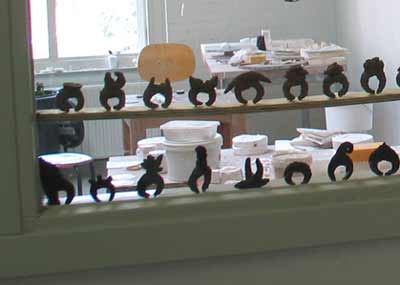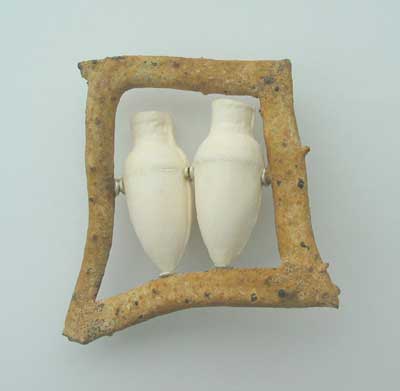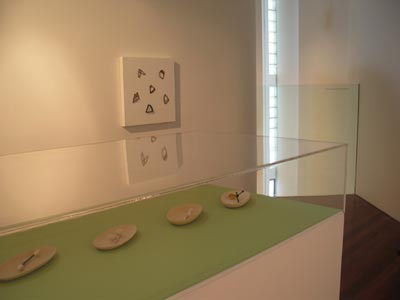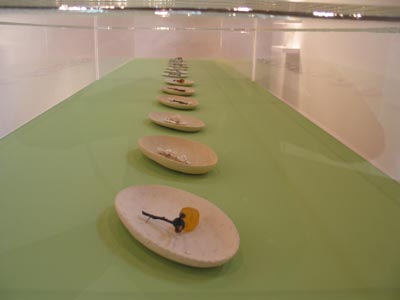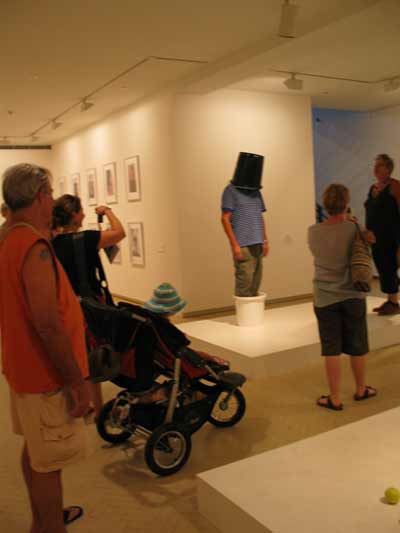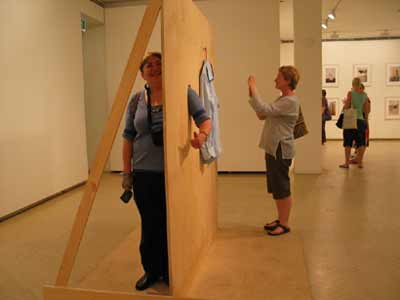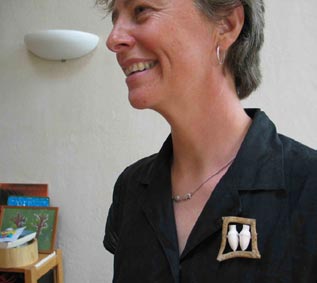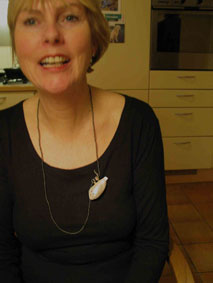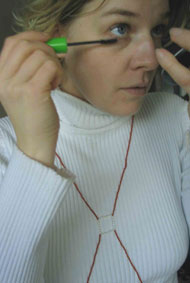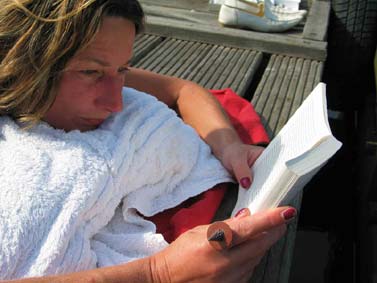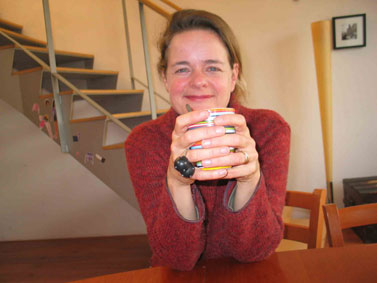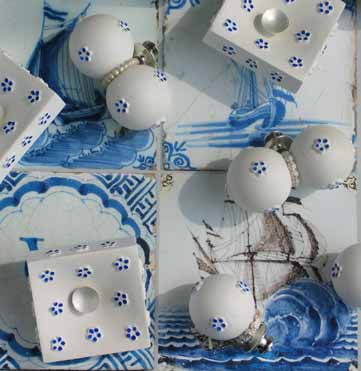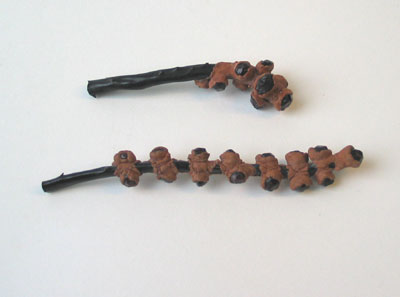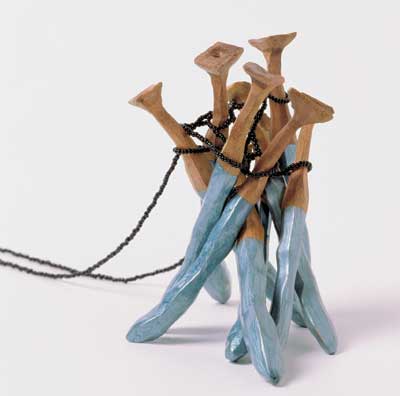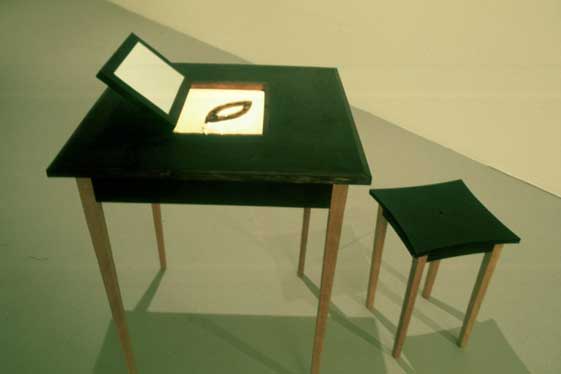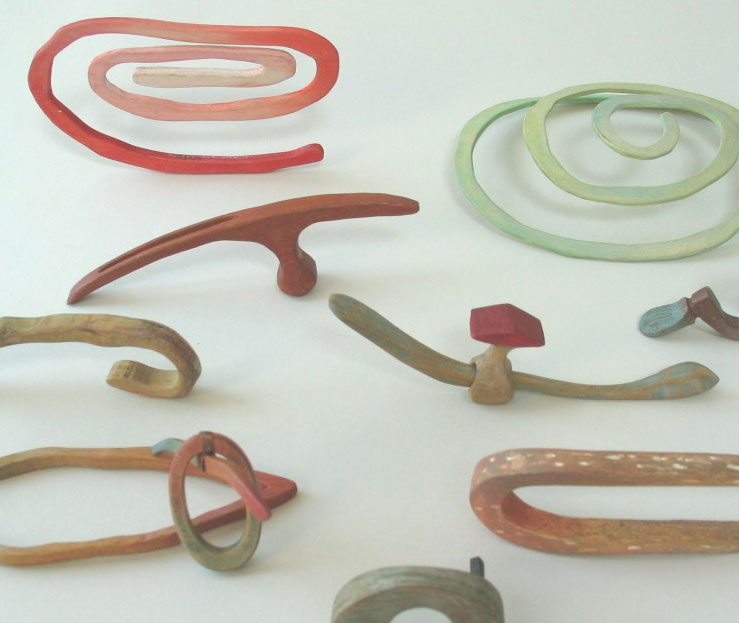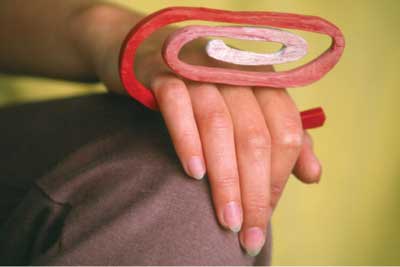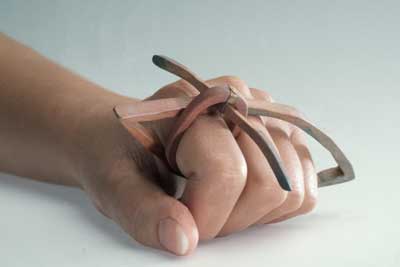| |
Reisgenoten
Reizen, het herkennen van het nog niet gekende en het reiken naar het ongekende dat meestal onbereikbaar blijft - ieder die het reizen in het bloed zit zal deze twee polen herkennen.
Het diepe genoegen om dingen te zien in een andere context dan de eigen omgeving, om te ervaren wat anderen beweegt, wat ze waardevol vinden, hoe ze ermee omgaan. En het verlangen om nog verder weg te gaan, naar een doel dat ondefinieerbaar is. Een eindpunt dat nooit wordt bereikt, want het gaat om het gaan. Het verlangen wordt nooit geheel gestild.
Rian de Jong is een reizigster. Zij gaat soms maanden achter elkaar op zoek, ervaringen opdoen, waarvan sommigen een invloed kunnen hebben op haar werk. Dat werk is het maken van sieraden. In 1989 werden haar houten hand- en schoudersieraden geselecteerd voor de Ornamenta 1, de internationale manifestatie die een trefpunt was voor de eigentijdse ontwikkelingen in het sieradenvak. Een tweede Ornamenta is er nooit gekomen - een van de onvervulde verlangens in het leven van de sieraadontwerper. Maar voor Rian de Jong, die in 1985 was afgestudeerd aan de Gerrit Rietveld Academie in Amsterdam, was dit een doorbraak. In het rijkgeschakeerde terrein van het moderne sieraad in Nederland viel zij op door te werken in hout, een materiaal waarvan zij de karakteristieken niet overstemde, maar stuurde en kleurde.
Zwerfhout is het dan geworden en zij geeft het een nieuw bestaan in een vorm die meegedragen kan worden. Met zwerfsteentjes heeft zij eveneens gewerkt. De meest eenvoudige kiezelsteentjes hebben in haar ijle, metalen ringen hun eigenwaarde gekregen. Met haar vormen heeft zij vele plekken op het lichaam gemarkeerd, soms met draagbare objecten die iets te groot zijn voor een sieraad, maar die toch in een aangename verhouding staan tot handen, polsen en bovenlijf.
In haar nieuwe collectie sieraden heeft zij de ervaring en het verlangen van het reizen vorm gegeven. Wat draag je mee, wat heeft waarde, hoe draag je dat mee - deze vragen zijn leidraad geweest bij het maken van het werk. De houten vormen doen denken aan kruikjes of flesjes. Je kunt niet verder zonder vocht. De huid van hout is nu zwaarder aangezet dan ooit tevoren, met grafiet en lak, waardoor de inhoud van de vormen geneutraliseerd worden. Ook uit de vormen zelf, met vele vertakkingen, wordt duidelijk dat de inhoud moeilijk is vast te houden. Je kunt de donkere kruikjes wel met je meedragen, aan lange kettingen die over een schouder gehangen worden, zodat de houder van het verlangen dicht tegen het lichaam zit. Die kettingen zijn van verschillende materialen, ze hebben kleine vertakkingen, of onderbrekingen, als onverwachte genoegens onderweg.
Zij verwerkt uiteenlopende materialen tot organische vormen die op verschillende manieren en plaatsen op het lichaam gedragen kunnen worden. Steeds is er de spanning tussen huid en vorm. Steeds is er het zoeken, het gaan, net als in de wijze waarop deze nieuwe reisgenoten in dit boekje zijn vastgelegd. In het ene beeld wordt de relatie van het sieraad tot het lichaam zichtbaar in het andere beeld is het een detail dat de aandacht opeist. In de beeldrijm van de inspiratiebronnen met sieraden wordt de continue reis zichtbaar die Rian de Jong in haar werk aflegt.
Kruikjes, zakflesjes en dergelijke vormen verwijzen naar bewaren, spaarzaam omgaan met de inhoud. Verlangen naar de inhoud. Er zijn altijd verlangens die onvervulbaar blijven.
Het maakt niet uit hoe rijk of arm je bent, hoe de huidige technieken zich verder zullen blijven ontwikkelen, sommige verlangens zijn niet in te vullen.
Dit is de reden dat de flesjes niet gevuld kunnen worden, er zijn te veel openingen waardoor de inhoud weg kan sijpelen.
Colofon
|
|
|
tekst
|
Marjan Unger (from the catalogue)
|
|
vertaling
|
Victor Jozeph
|
|
ontwerp
|
Joseph Plateau
|
|
fotografie
|
Peter Bliek
Henny v Beek
|
ISBN
|
9012561-2
|
|
|
Travelling companions
Travelling: recognizing the not yet known and reaching out towards an unknown which usually remains out of reach - anyone who has travelling in his or her veins will recognize these opposing poles. The intense pleasure of seeing things in a context that differs from the familiar
surroundings, of experiencing the things that move others, what things they prize and how they treat them. And the longing to travel yet further, towards a goal that is undefinable . A destination that is never reached, for it is the going that matters. The yearning is never entirely stilled.
Rian de Jong is a traveller. She sometimes goes for months at a time in search of experience, which later may have an influence on her work. That work is making of jewellery. Her wooden hand and shoulder ornaments were selected for Ornamenta 1, the international event that was a meeting-place for contemporary developments in the artists jewellery world, 1989.
For Rian de Jong, who graduated from the Gerrit Rietveld Academy, Amsterdam, in 1985, it was a breakthrough. Her work stood out in the field of modern jewellery in the Netherlands because of her use of wood, a material whose characteristics she did nit overwhelm but channelled and intensified.
Wood is a humble material in he context of jewellery design. It is a beautiful material, too, with a life of its own which can be read in its growth rings and knots. When employing a radical technique such as sawing, she first follows the nature of the wood and then abruptly denies it. In her hands, the wood retains its inherent beauty. It also gains an intimacy that makes the ornament into a form of personal expression. The making of jewellery is the gathering of experiences. She has become familiar with many kinds of wood in the course of time. She rarely goes in deliberate search of her material, but comes across it on her way, wood rejected by others who have no further use of it. It has become driftwood and she gives it a new lease of lie in a form that can be worn. She has also used pebbles in her work. The simplest little stones acquire a special dignity when set in the slender metal rings. She has marked a spot on the human body with her forms, sometimes with wearable objects that are a little too large to be called jewellery, but which nonetheless enter into a harmonious relationship with the wearer´s hands, wrists or torso.
In her latest collection of jewellery, she has given shape to the experience and the yearning of travelling. What do you wear, what do you value, how do you wear it - these questions underlie the decisions in making the work. The wooden forms recall little flasks or bottles. You cannot travel without fluids. She now places more emphasis on the surface, the skin, of the wood than ever before, using graphite or lacquer, thus she partly neutralizes the significance of the form. It is moreover clear from the forms themselves that, with their countless ramifications, their meaning cannot easily be fixed. You can carry one of these tiny, dark flasks on your journey, slinging it over one shoulder on a long chain, a container of yearning, close to the body. The chains are of diverse materials; they sometimes have small branches or interruptions, unexpected delights to encounter on the way.
Rian de Jong processes many different materials into forms which may be carried in different ways on various parts of the body. There is always a tension between the surface and the form. There is always a quest, the going, as in the journey of these new travelling companions as they make their way through this book. The relation of the ornament to the body may be obvious in one picture but a detail may claim the attention in another. The visual rhythm of the jewellery and some of its sources of inspiration give us a glimpse of the endless journey of Rian de Jong´s work.
|
|
